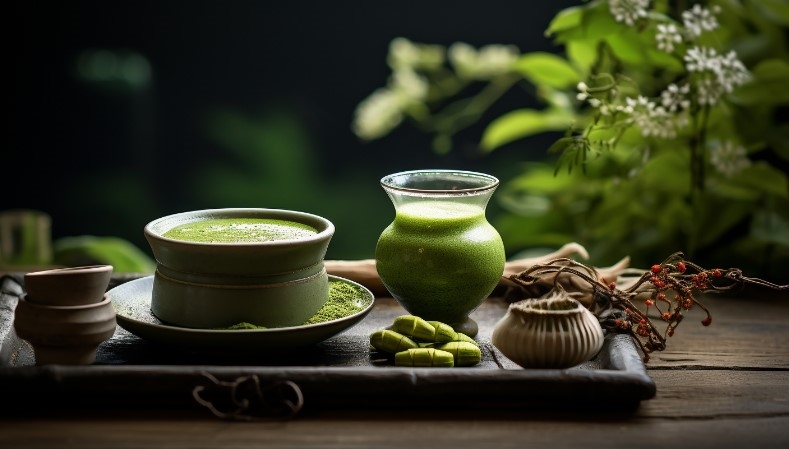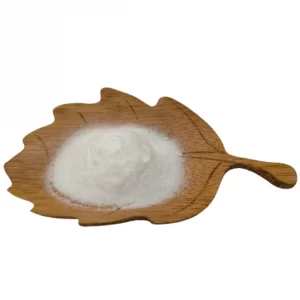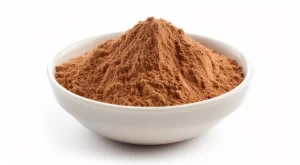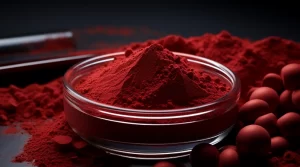About matcha’s past and present lives

Matcha
In the tea ceremony, “strong tea” uses 4 grams of matcha and 60CC of boiling water, which is a bit like paste. For “thin tea” use 2 grams of matcha and add 60CC of boiling water. You can use the tea whisk to brush out thick foam, very beautiful, refreshing.
In recent decades, people’s understanding of tea has been greatly deepened, and they have a profound understanding of the material nature of tea’s function. In modern times, the toxic side effects of antibiotics and growth hormones are increasingly questioned, tea polyphenols are more and more deeply involved in people’s dietary life with their unique biological functions and “green” nature.
In the current fast-paced society, there are few people who go to drink tea with the tea whisk, and more matcha is used to make a variety of exquisite foods, and green matcha foods become green flowers on the table, which are sought after and enjoyed by people.
Matcha originated in China, developed in the Tang Dynasty and reached its peak in the Song Dynasty. As early as the Tang Dynasty, people invented steaming green loose tea (grinding tea), and also formulated the method of evaluating the color and flavor of tea, and became an indispensable daily drink for people. In the Song Dynasty, it developed into a tea banquet, and CAI Xiang, the most famous tea expert and literary master at that time, commented on the method of tea bucket in the “Tea Record” : beat the group tea into small pieces, then grind it into fine powder, screen out the tea powder, take two coins into the hot tea cup, inject boiling water, and create soup flowers to taste color, aroma, and taste.
The Qing Dynasty Rudun and in the Yueyan interpretation said that the ancient tea must be a bit, the tea (matcha) is a pinch of tea, must choose one or two good fruit snacks, called snacks, called tea. The way to drink matcha here is the Chinese tea ceremony in the Tang and Song dynasties, so it can be seen that the Chinese tea ceremony (matcha) has a history of more than 1,000 years, several hundred years earlier than today’s Oolong tea ceremony.
Since the Ming Dynasty, China began to popular tea brewing and drinking, Chinese Matcha tea ceremony was lost, the crystallization of ancient Chinese civilization – tea mill also disappeared, Chinese matcha formed the historical era, and became the eternal pain in the hearts of Chinese tea people.
In contrast, Matcha, a Chinese tea that was introduced to Japan in the late ninth century with the imperial emissaries of the Tang Dynasty, flourished in Japan. The Japanese people have integrated tea tasting with religious philosophy, social morality and moral cultivation, and raised tea drinking to the height of “Tao”. The unique Japanese tea ceremony has now become the quintessence of Japan, cited as a state guest gift, and hailed as the best in Japan.
The tea whisk is a tool for mixing tea in ancient times, and the tea whisk is made of a finely cut bamboo whisk. In modern times, the tea whisk has become a necessary part of the Japanese tea ceremony, used to whisk the powder tea, then pour the right amount of cold water, and then quickly whisk the tea whisk to foam. Although the tea whisk is small, there are many concerns when using it, and we must be very careful.
Strictly speaking, the tea whisk is a disposable consumer product, but the Japanese who advocate economy allow repeated use of a tea whisk in the general tea ceremony practice, but when holding major tea events, it is stipulated that the new tea whisk must be used to express the importance of tea, respect for tea people, and the understanding and embodiment of the spirit of the tea ceremony of “harmony, respect, clarity, and isolation.”
Although ordinary tea contains extremely high nutrients, only 35% of the tea is really soluble in water, and a large number of insoluble active ingredients are thrown away as tea residue. Experiments have shown that eating tea can absorb more nutrients than drinking tea, and a bowl of matcha contains more nutrients than 30 cups of ordinary green tea, so almost all Japanese tea ceremony teachers live a long life. Changing tea to tea is not only a reform of eating habits, but also the need to adapt to the fast pace of modern life.
In recent years, the Japan-China Friendship and Exchange Association of Japan and Shanghai Uji Matcha Co., Ltd. have vigorously launched the slogan “Change tea into tea”, and actively promote scientific, economic and simple tea drinking methods to the public.
In the current fast-paced society, there are few people who go to drink tea with the tea whisk, and more matcha is used to make a variety of exquisite foods, and green matcha foods become green flowers on the table, which are sought after and enjoyed by people.
Backvita
matcha supplier: www.backvita.com
Email: [email protected]
Phone: +86 (029) 8187 2325



